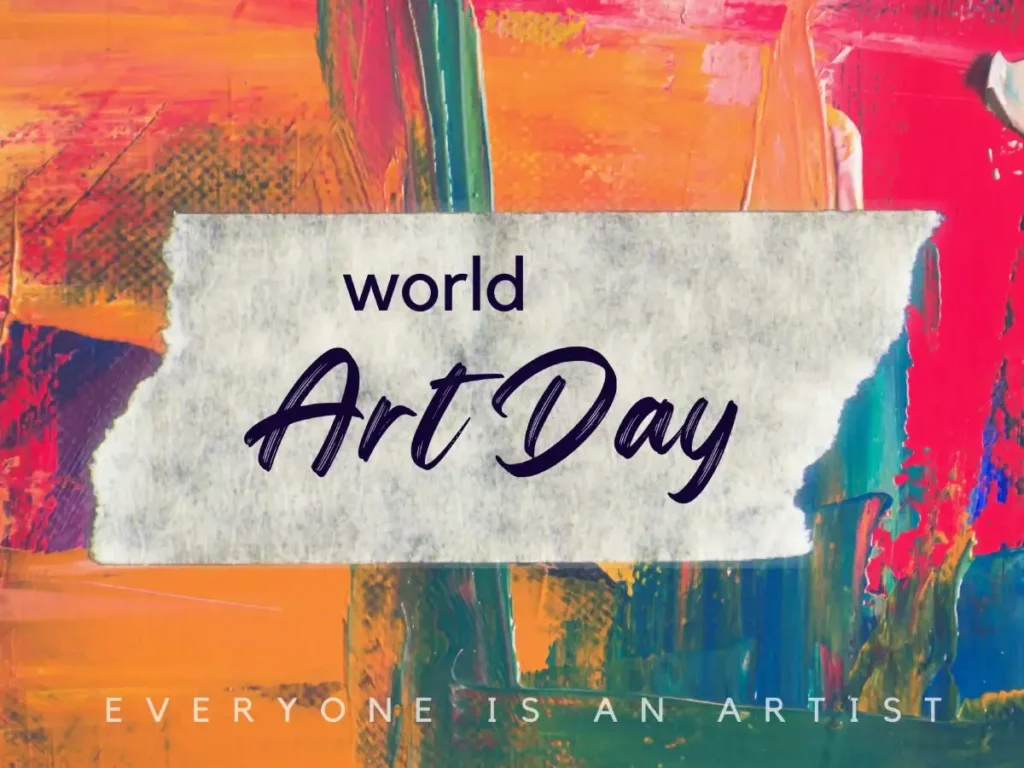World Art Day 2025: A Global Tribute to Creativity, Culture, and Expression

Every year on April 15, the world unites to celebrate the universal language of creativity—World Art Day. Marked in honor of the legendary Leonardo da Vinci’s birth, this day goes far beyond galleries and brushstrokes. It stands as a tribute to human imagination, the richness of cultural expression, and the powerful role that art plays in shaping societies.
In 2025, the significance of World Art Day feels more relevant than ever. As the world becomes increasingly fast-paced and digital, art offers a meaningful pause. It reminds us to slow down, reflect, connect, and imagine—together.
The Essence of World Art Day
What makes World Art Day special isn’t just its celebration of famous paintings or sculptures. It’s about recognizing the power of artistic expression in all its forms—visual, musical, literary, digital, and even abstract. Art transcends borders, languages, and ideologies. It has the capacity to inspire, heal, provoke, and unite.
Organized globally through efforts led by UNESCO and the International Association of Art (IAA), this day recognizes how art contributes to peace, understanding, and development. It celebrates not only the works of legendary artists, but also the creative spirit in classrooms, communities, and even the streets.
Art as a Bridge Across Cultures
From cave paintings to digital NFTs, human beings have always used art to communicate. It helps preserve cultural identities, tell stories, and express shared dreams. On World Art Day, countries around the world celebrate their unique artistic heritage—from intricate textiles in South America to traditional ink paintings in East Asia.
In India, for instance, World Art Day becomes a stage for showcasing both classical art forms like Madhubani, Warli, and Pattachitra, and contemporary works from emerging creators. Communities organize art walks, exhibitions, and school competitions, bringing together people of all ages and backgrounds.
In African nations, traditional music and mask-making find a spotlight, while European cities host interactive light installations and live mural painting sessions. Art becomes the thread that connects the past with the present, the personal with the political.
Art’s Role in Our Everyday Lives
Contrary to popular belief, art isn’t limited to museums or galleries. It’s everywhere. It’s in the music that moves us, the films that make us cry, the architecture we walk past every day, and even in the memes we laugh at online.
Art influences how we think, how we work, and how we interact with others. Designers, filmmakers, animators, writers—all play a role in shaping our environment. Even advertising, often overlooked, is rooted in visual storytelling.
Introducing young minds to art through education enhances their creativity, emotional intelligence, and critical thinking. Businesses that invest in artistic projects or workspaces often see boosts in employee morale and innovation. In short, art is not a luxury—it’s essential.
Creativity as a Catalyst for Social Change
Art doesn’t just reflect the world—it challenges it. Across history, it has been a medium of resistance, advocacy, and reform. Think of how Picasso’s “Guernica” condemned the horrors of war, or how today’s muralists use public walls to demand justice and equality.
In the modern era, artists are also tackling issues like climate change, gender rights, mental health, and poverty. Whether through street art, digital illustrations, or performance, creators are amplifying marginalized voices and inviting society to listen, think, and act.
Public installations and digital art campaigns are now central to social movements. They don’t just decorate—they provoke and engage. And on World Art Day, this role becomes even more amplified as artists across the globe unite to speak in one, powerful voice.
Celebrations in 2025: Creativity in Action
World Art Day 2025 is being marked with renewed energy and imagination. Museums in cities like Paris, New York, Tokyo, and Mumbai are offering free access and hosting special exhibitions. Community centers are organizing art therapy workshops, public chalk art sessions, and pop-up galleries featuring local talent.
In schools, students are participating in painting competitions, poetry slams, and storytelling circles that focus on themes like sustainability, peace, and equality. In the digital realm, artists are collaborating globally through livestreams and virtual exhibitions.
One particularly inspiring trend is the rise of interactive public art—where communities come together to co-create murals, sculptures, or installations. This shared act of making becomes a symbol of connection and inclusion.
Supporting Artists and Creative Voices
While the celebration is grand, it’s important to acknowledge the challenges that artists often face. Many struggle with financial instability, lack of exposure, or limited access to platforms—especially in underserved regions.
World Art Day is a reminder of the need to invest in creative ecosystems. This means more funding for local art projects, better access to education and training, and the creation of public spaces where art can thrive.
Supporting art doesn’t always require grand gestures. Buying from local artists, attending exhibitions, promoting creators on social media, or simply engaging with their work with intention—all of this matters.
A Day for Everyone
Whether you’re a painter, a poet, a digital designer, or someone who simply appreciates a good film or a song, World Art Day is your day. It’s a celebration not just of professionals, but of the artist within all of us.
In 2025, as the world becomes more connected yet more complex, the role of art becomes even more vital. It brings joy, sparks thought, fosters empathy, and encourages us to imagine a better future.
So, take a moment today—draw, dance, sing, write, visit a gallery, or support an artist. Celebrate the power of creativity. Because in every brushstroke, lyric, or story lies a piece of humanity.






